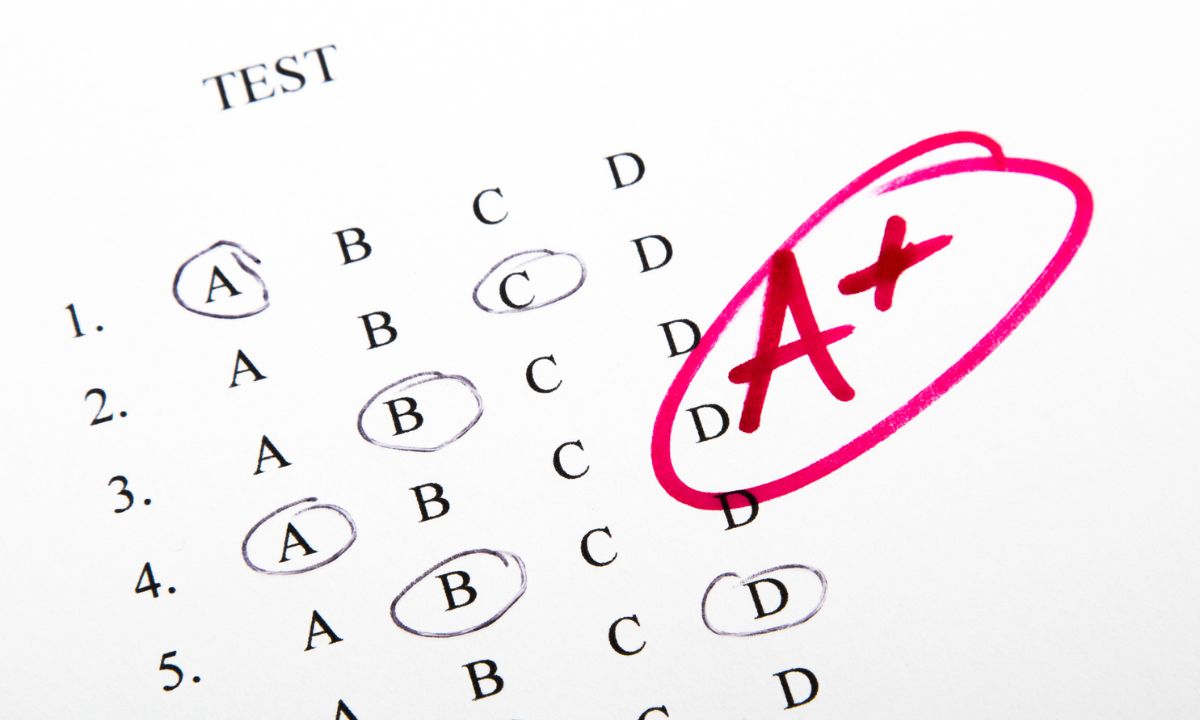
This article was originally published in Virginia Mercury.
Virginia students’ reading and math assessments for the 2023-24 school year saw some improvement over last year after months of recovery efforts, according to data released by the Department of Education Tuesday. However, pass rates in other subjects are still behind results from the 2022-23 school year.
Pass rates for grades 3 through 8 in reading, math, and science Standards of Learning tests all showed increases statewide by at least 1%. Writing showed the highest increase — 17 percentage points — while history and social science saw little gain, less than a percentage point.
The Standards of Learning tests (SOLs) are used in Virginia to measure student learning and achievement in mathematics, reading, science, writing, and history and social science. Testing was suspended during 2020-21, when many schools around the state stopped in-person instruction in response to the COVID-19 pandemic.
Get stories like these delivered straight to your inbox. Sign up for The 74 Newsletter
In 2023-24, roughly 71% of Virginia students passed the math tests compared to 82% before the pandemic. On reading tests, 77.5% of students overall passed compared to 73% before the pandemic.
The administration has regularly pinned the results of the learning loss on prior Boards of Education that changed the state’s standards of school accreditation and lowered the scores required to be considered proficient in a certain subject, on student assessments. Democrats and previous board members have defended such decisions.
“Every single one of our data releases is a snapshot into a motion picture, and I’m pleased today that the motion picture will, in fact, show that a ship that was off course has been turned around, and that we are seeing progress,” said Gov. Glenn Youngkin, “but we will also say today that we have a long way to go.”
Last September, the administration, troubled by the significant learning loss in reading and math, dedicated $418 million through the 2025-26 school year to the problem. The administration launched “high-intensity” tutoring programs and the “ALL IN VA” plan to focus on attendance, literacy and tutoring.
Statewide, schools hired additional tutors, extended instruction time before and after school, and focused on using the state’s free personalized supplemental math and reading resources.
The data showed a 16% reduction in students chronically absent in 2023-24 compared to the previous year. Students are chronically absent if they have missed at least 18 days of instruction for any reason, including excused and unexcused absences.
Data shows pass rates statewide increased for economically disadvantaged students, English learners and students with disabilities over the previous two school years.
Mixed results between counties
However, school divisions have had mixed results with pass rates.
Fairfax County, the largest school division in Virginia, maintained similar pass rates in reading, math and science over the previous two school years, but experienced significant drops in writing, and history and social science by at least 20 percentage points each.
Craig County, one of the smaller school divisions in the commonwealth, saw increases in all five subject areas.
The administration also praised school divisions such as Bath and Brunswick County Public Schools.
Between 2022-23 and 2023-24 school years, Bath saw a 19% increase in reading scores and Brunswick saw a 21% increase in grades 3-8 math pass rates.
With schools facing the threat of All In VA funding ending in two years, Kristy Somerville-Midgette, superintendent of Brunswick County Public Schools, recommended superintendents work with their school boards, and local government and “be creative” with their funding and “look for opportunities to best serve students.”
Levi Goren, a policy director at The Commonwealth Institute for Fiscal Analysis, said in a statement that the increases in pass rates are “great” and the success is likely connected to the recent increases in state support for students. Support for students facing “higher barriers,” such as students from low-income families, students with disabilities, and English language learners, is still needed, Goren added.
“While today’s scores were promising for some of these students, we know that one strong year of improvement cannot make up for the continued impact of years of insufficient funding,” Goren said. “Sustained increases in state funding would help lift test scores and other outcomes for students facing greater barriers.”
Virginia Mercury is part of States Newsroom, a nonprofit news network supported by grants and a coalition of donors as a 501c(3) public charity. Virginia Mercury maintains editorial independence. Contact Editor Samantha Willis for questions: info@virginiamercury.com. Follow Virginia Mercury on Facebook and X.
EMEA Tribune is not involved in this news article, it is taken from our partners and or from the News Agencies. Copyright and Credit go to the News Agencies, email news@emeatribune.com Follow our WhatsApp verified Channel





